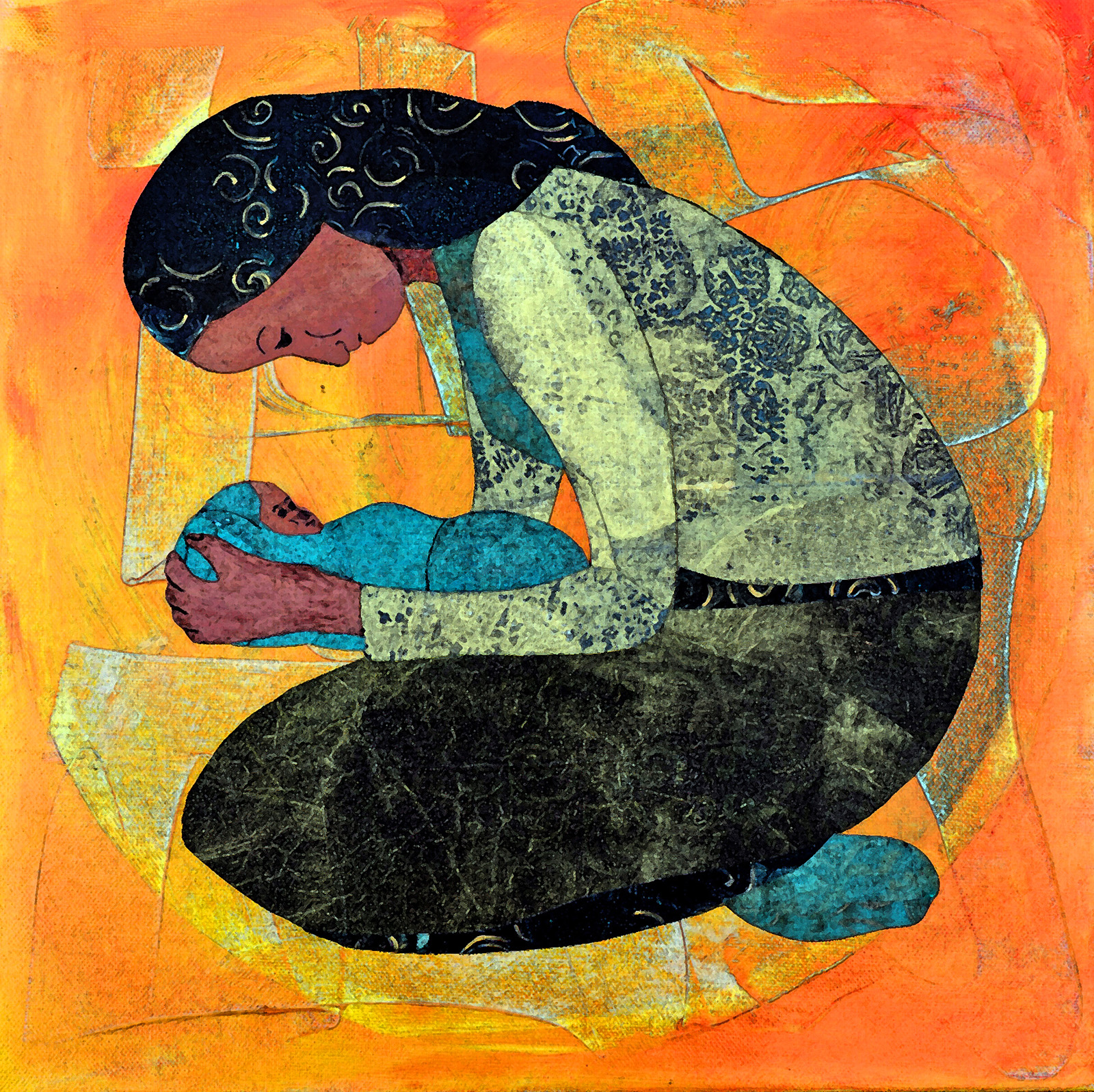
The art for Maryknoll Lay Missioners’ 2022 Christmas card is Madonna and Child by ©Kate Hennessy. Kate is a writer and the youngest of Dorothy Day’s nine grandchildren. She lives in Eyeries, County Cork, Ireland.
During a spiritual renewal in Ireland earlier this year, former Catholic Worker and current Maryknoll lay missioner Marj Humphrey visited her friend Kate Hennessy, the youngest grandchild of Dorothy Day. Marj saw Kate’s beautiful painting Madonna and Child and sent it to the lay missioner office, suggesting we consider it for our Christmas card.
With my very first glance, I was surprised by how immediately I was taken by the tenderness between Mary and the Christ child. Kate’s work of art invites us to contemplate a beautiful moment of intimacy, the loving gaze between a mother and her newborn. One cannot help but see that Jesus was born out of love and into love. I imagine that made all the difference in his life.
We also know that Jesus was born into poverty, similar to roughly one quarter of humanity who experience multidimensional poverty. Jesus was born into a family who was forced to move — just like the many migrants, displaced persons and refugees whose numbers today total more than any other point in human history.
Jesus, born a Galilean “marginal Jew” and thus scorned by Judean Jews, was born into a larger societal context in which the poor were subjected to oppressive laws, classist and religious discrimination and a system of justice marked by consequences and punishment. As we know, disparity, privilege and discrimination contribute to marginalization still today.
But that gaze of love — from “the lowliness of God’s servant” (Luke 1: 48), right in the middle of this messy reality — teaches us to also gaze at Christ and how to live life amidst today’s chaos.
I often wonder how Mary held it together without a decent place to give birth and how she would later cling to her child and courage while fleeing for Egypt. As a “voiceless” woman kept quiet because of her power-down position, I imagine that her mercy and tenderness were born out of an empathic solidarity with the oppressed. Her strength grew from a deep trust in God who could create what theologian Walter Brueggemann called an “unthinkable turn in human destinies when all seemed impossible.”
I have always sensed through scripture that Mary understood what it meant to be present and passed that understanding on to Jesus. Did he learn from her how to interweave humility, mercy and compassion with justice? Mary, the first disciple, still has much to teach us about mission today.
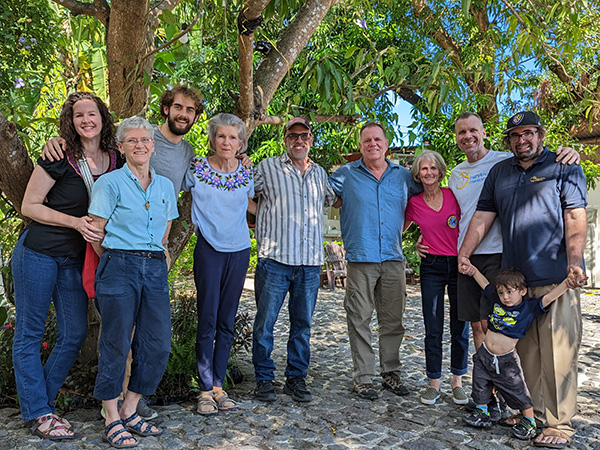
Ted Miles (blue shirt, sixth from left) with Maryknoll Lay Missioners’ El Salvador region.
This year my Advent season began with a visit to our lay missioners in El Salvador and the communities who welcome them. Wherever I went, the depth of the relationships between missioners and Salvadoran community members mirrored this tender, compassionate and humble way of being present to one another.
And the gazes of love … between Larry Parr and the young men and women during a celebration honoring their recent educational achievements and contributions of service to each other and their community … in the affection between Ann Greig and the women and men who enter the Soy Program for a meal and community … as Peg Vamosy greets person after person on her way into Sunday Mass … as Melissa Altman proudly introduces her Salvadoran colleagues Esmeralda and Jeanette at Acomujerza, a co-op for women.
You know the gaze of love … when we look at our child for the first time, when we take the hand of an aging parent, when trust is established, when we are surprised by a needed gesture of kindness, or when we know someone is there to accompany us. It’s as if God’s voice is whispering, “Do you see me within this person? I am here.”
Our sisters and brothers who are poor, marginalized and oppressed are too often judged for the harsh messiness and chaos that characterizes their lives and the decisions they are forced into. We ignore the root causes of these realities, and we gaze with misunderstanding at best, condemnation at our worst.
God’s mission starts with the gaze of love, and we might be surprised by what this gaze uncovers. During a heartwarming conversation, lay missioner Josh Wetmore recounted a story from his orientation in which Maryknoll Father Larry Lewis described mission as “humanity highlighted.” That description resonates. The incarnation highlights the dignity of humanity.
Mary’s loving gaze highlights the beauty of her newborn child, and her life emulates the intimacy we can embrace with God and each other. The relationships between our lay missioners and their mission communities highlight humanity building bridges across our differences, mutually caring for one another and working together for peace. The gaze of love reduces the chaos and fills the empty places with a trust that God is always with us.
Perhaps it truly takes “the long loving look at the real,” as Jesuit theologian Father Walter Burghardt described contemplative prayer, to see what humanity is made of and made for: love.
Mission indeed highlights humanity — our sacred image, our potential, God in and with us — and mission begins with the very gaze God has for us, the gaze of Mary toward the babe in Kate’s Madonna and Child, the gaze of love.
In this Christmas season, as we gaze at the Christ child, may we see all that is human, all that is divine. And may the beauty and intimacy of these moments transform our gaze to one of love for each other and the rest of God’s creation.

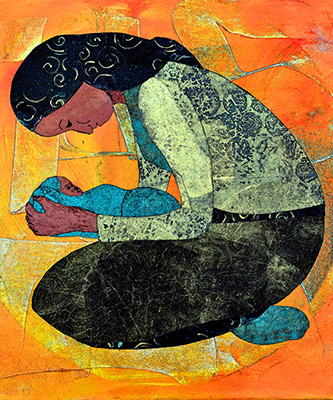

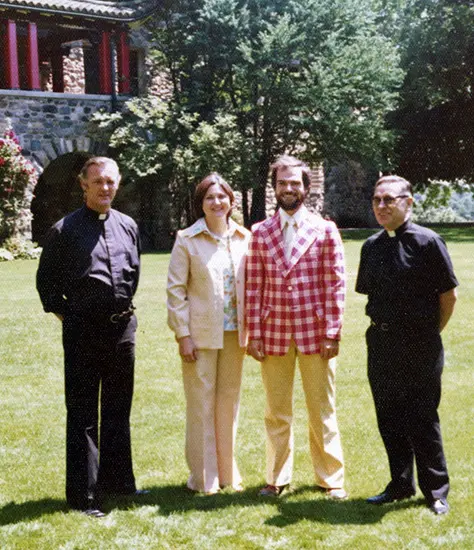
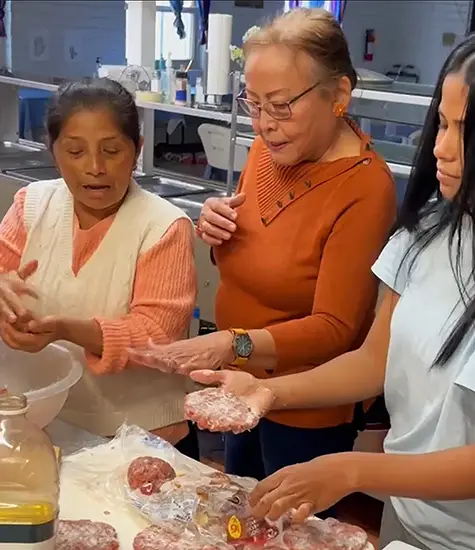
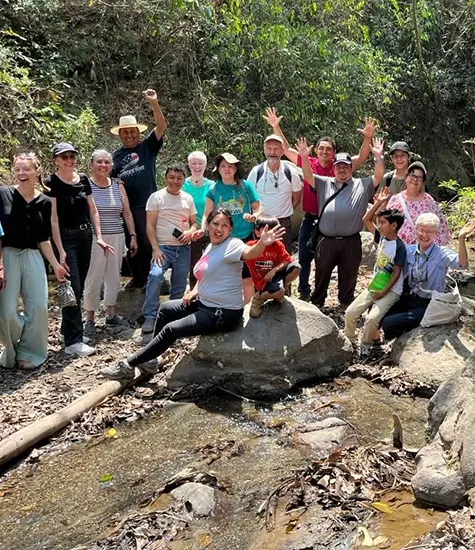




Merry Christmas, Ted, and all the Missioners! Blessings to all.